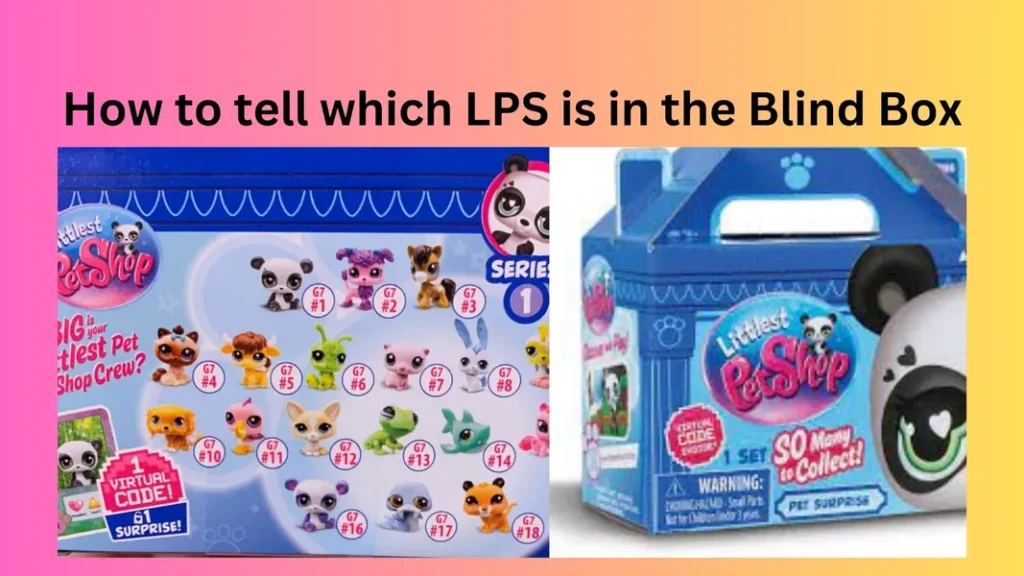If you’re a fan of Littlest Pet Shop (LPS), you’ve probably felt that thrill of unwrapping a blind box. It’s like Christmas morning, but there’s also a sense of mystery—will you get that one LPS you’ve been wanting, or another duplicate? Blind boxes are designed to keep us guessing, but what if there was a way to figure out which LPS is inside before opening it? Sound impossible? Not quite! With a few simple strategies, you can improve your chances of predicting which adorable figure is hiding in that tiny box.

Ready to become an LPS detective? Let’s dive in and uncover the tricks that can help you crack the mystery of the blind box!
1: What Are LPS Blind Boxes?
First things first, if you’re new to the world of Littlest Pet Shop, let’s quickly explain what blind boxes are. A blind box is a small, sealed package containing a mystery LPS toy. You don’t know what you’re getting until you tear into it. These boxes have taken over toy aisles, adding an element of surprise to collecting.
1: Why Blind Boxes Are So Popular
Blind boxes have an allure of their own. Part of the fun is in the surprise—you never quite know what you’re going to get. It’s like a toy version of a lottery! But for serious collectors, the unpredictability can be frustrating, especially when you’re chasing a rare figure. This is where knowing how to tell which LPS is in the blind box can save you time, money, and a lot of duplicates.
2: Can You Really Tell Which LPS Is Inside?
This is the million-dollar question, right? While blind boxes are designed to be unpredictable, seasoned LPS collectors have discovered a few tricks to help identify what’s inside before purchasing or unwrapping it. No, it’s not magic—it’s a mix of observation, careful detective work, and sometimes a little bit of luck.
2: Tricks to Guess Which LPS is in the Blind Box
Let’s explore some of the most effective ways you can try to identify which LPS figure you’re getting in your blind box.
1. Check the Codes or Numbers
One of the best-kept secrets in the blind box community is the codes or numbers printed on the packaging. Most blind boxes have a subtle, hidden code—often a small string of numbers or letters—stamped on the bottom or side. These codes are often specific to a certain figure, meaning they can clue you in on what’s inside.
1: How to Find the Code
Finding the code isn’t always easy. You may need to look at the bottom seam of the box or the barcode area. Once you’ve located it, do a quick internet search for LPS blind box code guides—some collectors share lists that correspond the codes with specific figures.
2: Be Cautious with Revisions
It’s important to note that some blind box series go through revisions, and codes may change with each revision. Always double-check to ensure the code you’re using matches the correct series.

2. Use the Feel Method
This is where your inner detective skills really come into play. While blind boxes are sealed, you can still use your sense of touch to feel around for clues. Gently squeeze and poke the package (without opening it) to get a sense of the shape of the figure inside.
1: What to Look (or Feel) For
Each LPS figure has a distinct shape—whether it’s a dog with pointy ears, a cat with a long tail, or a bird with wings. Gently feel for any identifying features that could give away the identity of the pet.
This method isn’t foolproof, but over time, you can hone your skills and become a master at distinguishing shapes through the packaging!
3. Compare the Weight
Another sneaky trick? Weigh the box. Certain LPS figures are heavier than others, especially if they come with accessories or have extra-large features. Bring along a small scale (like a kitchen scale) when you’re shopping, or simply compare the weight of the blind boxes by hand.
1: Why This Works
Not every LPS weighs the same, and even the slightest difference can clue you in. If you know from experience that a certain figure is heavier or lighter, you can narrow down your options. This technique is especially useful if you’re hunting for a specific pet.
4. Look for Specific Packaging Features
Some blind boxes may have slight packaging differences depending on the figure inside. This could be as subtle as a slight bulge in the packaging or the way the box is sealed. You may need a sharp eye for this one, but with practice, it becomes easier to spot.
5. Research Online Resources
Thanks to the online LPS community, there’s no shortage of resources to help you out. From YouTube unboxings to forums dedicated to blind box collectors, there’s plenty of information on what you can expect in each series.
1: Find the Right Communities
Sites like Reddit, YouTube, and specialized toy forums have threads where collectors share their experiences. Often, they’ll post detailed descriptions, videos, or images of their unboxings. This can give you valuable clues about what to expect and which methods have worked for them.
3: Understanding the Rarity Factor
Not all LPS figures are created equal—some are much rarer than others. So, how do you increase your chances of scoring one of these elusive pets?
6. Look for Rarity Indicators on the Packaging
Sometimes, LPS blind boxes will include clues about the rarity of the figures inside. For example, they might list which figures are common, rare, or ultra-rare. While this doesn’t tell you exactly which figure is in your box, it does give you an idea of your odds.
1: Common vs. Rare LPS
Common figures are usually more plentiful, so your chances of getting one are higher. On the flip side, rare figures might only be available in a few boxes per case, making them harder to find. If you’re aiming for a rare LPS, be prepared to put in a little extra detective work.

7. Use Case Distribution Patterns
Toy companies often follow specific distribution patterns when packing blind boxes. For example, a case might contain 24 boxes, with 18 being common figures and 6 being rare or ultra-rare. If you can figure out where the rare figures tend to be located within a case, you can strategically pick your box.
1: Shop When New Cases Arrive
To maximize your chances of scoring a rare LPS, try to shop when stores have just received a fresh case of blind boxes. This way, you’re not left with the boxes no one else wanted, and you’ll have a better chance of picking a rare figure.
4: What to Do If You Get Duplicates
So, you’ve tried all the tricks and still ended up with a duplicate. Don’t worry—it happens to the best of us! But that doesn’t mean your duplicate LPS has to go to waste.
8. Trade with Other Collectors
One of the best parts of collecting LPS is the community. If you get a duplicate, consider trading it with another collector who might have the figure you’re looking for. There are plenty of online groups where you can safely swap figures.
1: Where to Trade
You can find LPS trading groups on Facebook, Instagram, or even dedicated LPS forums. Just be sure to follow any trading guidelines and only swap with trustworthy collectors.
9. Sell or Gift Your Duplicates
Another option is to sell or gift your duplicates. If you have extras of a popular figure, you might be able to sell it online through platforms like eBay or Etsy. Or, if you’re feeling generous, consider gifting your duplicate to a friend or family member who also collects LPS.
Conclusion: Can You Really Tell Which LPS Is in the Blind Box?
While blind boxes are designed to keep us guessing, these tips and tricks can help you improve your chances of identifying which LPS figure is inside. Whether you’re checking for codes, feeling the packaging, or comparing weights, each method adds a little bit more insight into the mystery.
Of course, there’s always going to be an element of chance—that’s what makes blind boxes so fun. But by using these strategies, you can minimize the guesswork and hopefully snag that rare or favorite figure you’re after.
Good luck, and happy unboxing!
FAQs
1. Can you guarantee which LPS is inside the blind box?
Unfortunately, no method can guarantee 100% accuracy, but using clues like codes, weights, and packaging features can improve your chances.
2. What happens if I get a duplicate figure?
You can trade, sell, or gift duplicates. Trading with other collectors is a fun way to complete your collection.
3. Are some LPS figures rarer than others?
Yes, some figures are considered rare or ultra-rare and may be harder to find in blind boxes.
4. Where can I find LPS blind box codes?
Many collectors share code guides online in forums and on social media platforms. A quick search for your specific series can yield helpful results.
5. Is weighing the blind box a reliable method?
It can be! Some LPS figures are heavier than others, and comparing weights can help you make an educated guess about what’s inside.